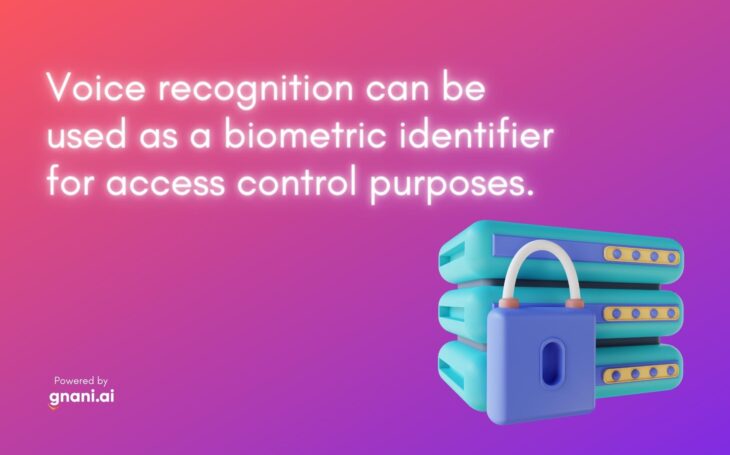
Voice recognition technology is one of the most commonly used biometric identifiers. It is used to identify individuals by their voice patterns. This technology can be used for access control purposes to ensure that only authorized individuals are allowed into a particular area.
Why Voice recognition though?
Voice recognition is considered to be a very reliable biometric identifier because it is very difficult to replicate someone’s voice. This means that the chances of someone being able to access a particular area without authorization are very low. Additionally, voice recognition systems can be integrated with other security measures, such as facial recognition, to further increase security.
How Voice recognition can be used?
Voice recognition systems can be used to control access to physical locations, such as buildings or rooms within a building. They can also be used to control access to computer systems or networks. In order to use voice recognition for access control, individuals must first enrol in the system. This involves recording their voice so that it can be stored and matched against future recordings. When an individual attempt to access a particular area, their voice will be compared to the stored voice patterns. If there is a match, then the individual will be granted access. If there is no match, then the individual will be denied access.
Voice recognition systems can be used in a variety of different settings, such as office buildings, factories, hospitals, and even homes. They are often used in combination with other security measures, such as CCTV, to provide a high level of security. Additionally, voice recognition systems can be used to control access to sensitive information or systems. For example, they can be used to control access to financial records or medical records.
What are its advantages and disadvantages to it?
Advantages:
- Voice recognition is a relatively non-intrusive method of identification.
- It can be used to identify individuals even when they are not physically present.
- They are generally easy to use and require little training.
- Voice-based systems are becoming more accurate as technology advances.
- They can be used in combination with other security measures, such as CCTV.
Disadvantages:
- Voice recognition systems can be fooled by recordings of an individual’s voice.
- They can be affected by environmental noise.
- Some individuals may have difficulty using voice recognition systems due to their accents or speech impairments.
- Voice recognition systems can be expensive to implement.
- The accuracy of voice recognition systems can vary depending on the individual’s voice and the quality of the recording.
Voice recognition technology is also very reliable and accurate. It has a very low false acceptance rate, which means that it is very unlikely that someone other than the authorized individual will be able to gain access to the restricted area.
Overall, voice recognition technology is a very effective and secure method of identification for access control purposes. It is convenient, easy to use, and reliable. It can be used to identify individuals by their voice patterns and ensure that only authorized individuals are able to gain access to a particular area.
How do you think this new technology will change the way we live? Let me know in the comments!




